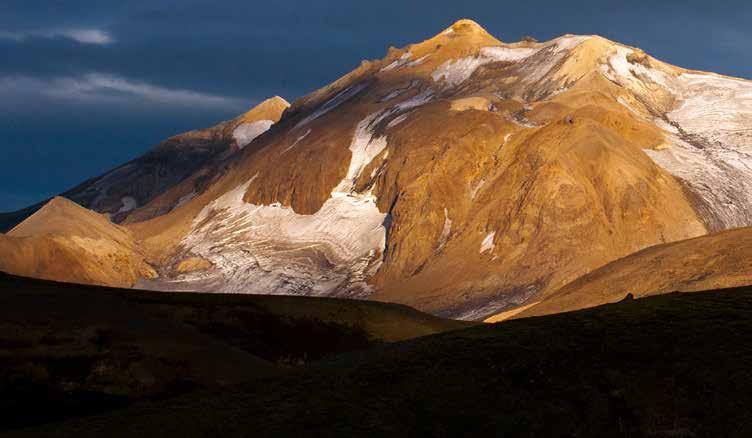
2 minute read
History of Iceland
A Very brief
874-930
The Settlement of Iceland by the Vikings started in 874 and was largely completed by 930 AD. It was precipitated largely by internal struggles in Norway between King Harald the Fairhaired and other nobles. King Harald won a major victory late in the 8th century, after which he drove his enemies to the Scottish Isles, which he then later conquered. Many fl ed onwards to Iceland. The first Viking settler in Iceland is believed to be Ingólfur Arnarson. He started a farm in Reykjavík. The years between 874 and 930 AD saw increasing numbers of Viking settlers arriving from Scandinavia (bringing with them Celtic women and slaves) and claiming land in the habitable areas.
930
Parliament: The Alþingi, Iceland’s present-day parliament, is the world’s oldest existing national assembly. A constitutional law code was written and the Alþingi parliament established. Founded at Þingvellir in 930 AD, the country’s democratic system of government was completely unique in its day. The judicial power of the Alþingi was distributed among four regional courts, together with a supreme court which convened annually at the national assembly at Þingvellir. The Alþingi assembled for two weeks every summer and attracted a large proportion of the population.
1000-1106
Christianity was peacefully adopted at Þingvellir in the year 1000 AD. The first diocese was established at Skálholt in South Iceland in 1056 and a second at Hólar in the north in 1106. Both became the country’s main centres of learning.
1120-1230
The Sagas include some of the classics of world medieval literature and are written in the ancient Viking language— Old Norse. Between 1120 and 1230, the Norse Sagas were written down on vellum in Iceland. The first literary medium to emerge was poetry, which tended to be heroic in theme. Poetry was then replaced by epic and dramatic tales of early settlement, romance, disputes and the development of Iceland.
1244-1262
Conquered: Norway laid a claim to Iceland and conquered the island in 1262 in a navy battle which resulted in the infamous Sturlung Age, a turbulent era of political treachery and violence, dominated by Sturla Thurdason and his sons. Iceland became a Norwegian and later a Danish province and didn’t regain it’s independence until 1944.
1855-1890
Emmigration: In the last quarter of the 19th century, the Icelandic nation was beset by problems of hardship, overpopulation, disease and famine. Icelanders had been emigrating west to North America since 1855, but the first organised journey was undertaken in 1873 when a large group sailed from Akureyri. The greatest exodus to the west took place shortly after 1880 and the situation lasted until 1890, when living conditions began to improve.
1904-1930
Home Rule came to Iceland with the appointment of the fi rst Icelandic government minister. In 1918, Denmark, recognised Iceland as a fully sovereign state, united with Denmark under a common king. Denmark, though, retained responsibility for Iceland’s defence and foreign affairs. In 1930 there were huge celebrations at Þingvellir in honour of the millennial anniversary of the founding of the Alþingi parliament.
1944
Independence: When the Germans occupied Denmark in April 1940, Iceland took over its own foreign policy and proclaimed its neutrality. The island’s vulnerability and strategic value became a matter of concern for the Allies, who occupied Iceland in May 1940. Following a plebiscite, Iceland formally became an independent republic on June 17, 1944.










